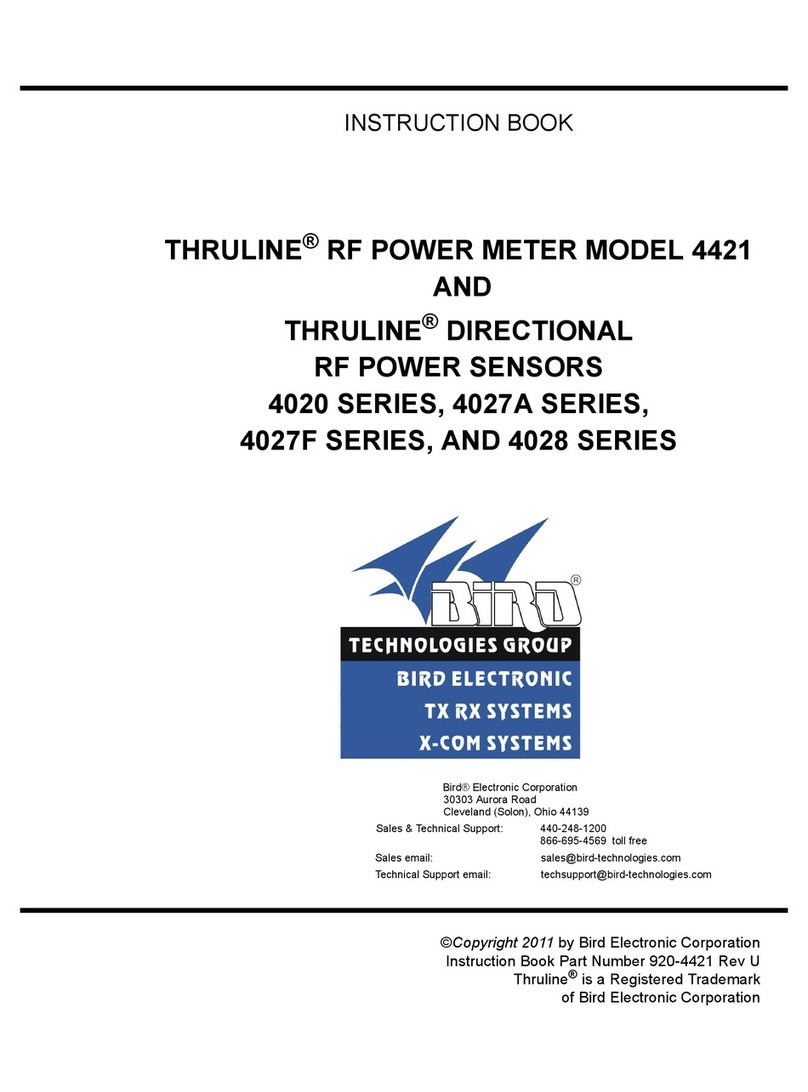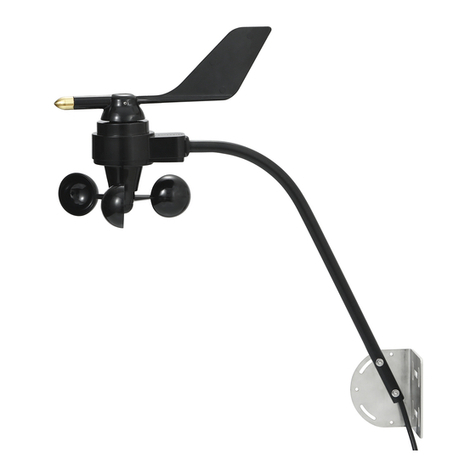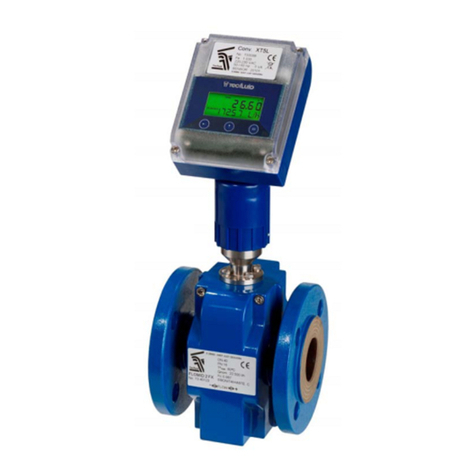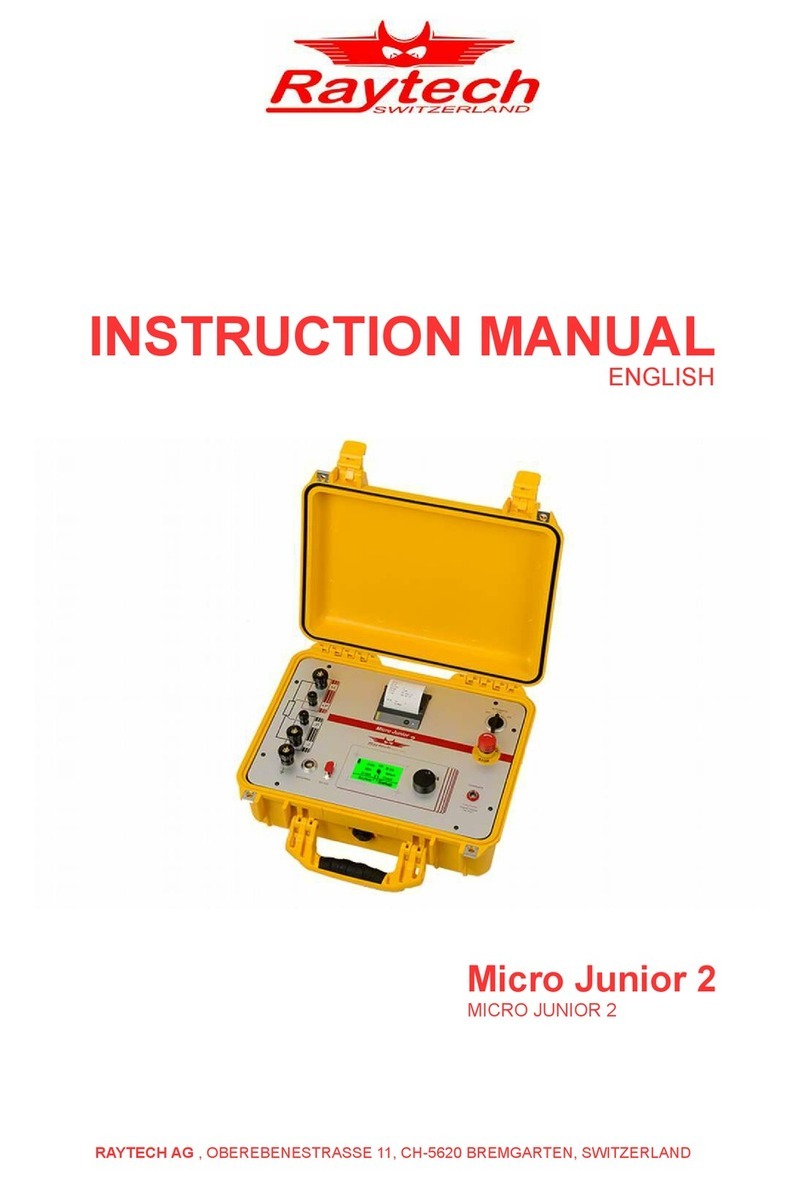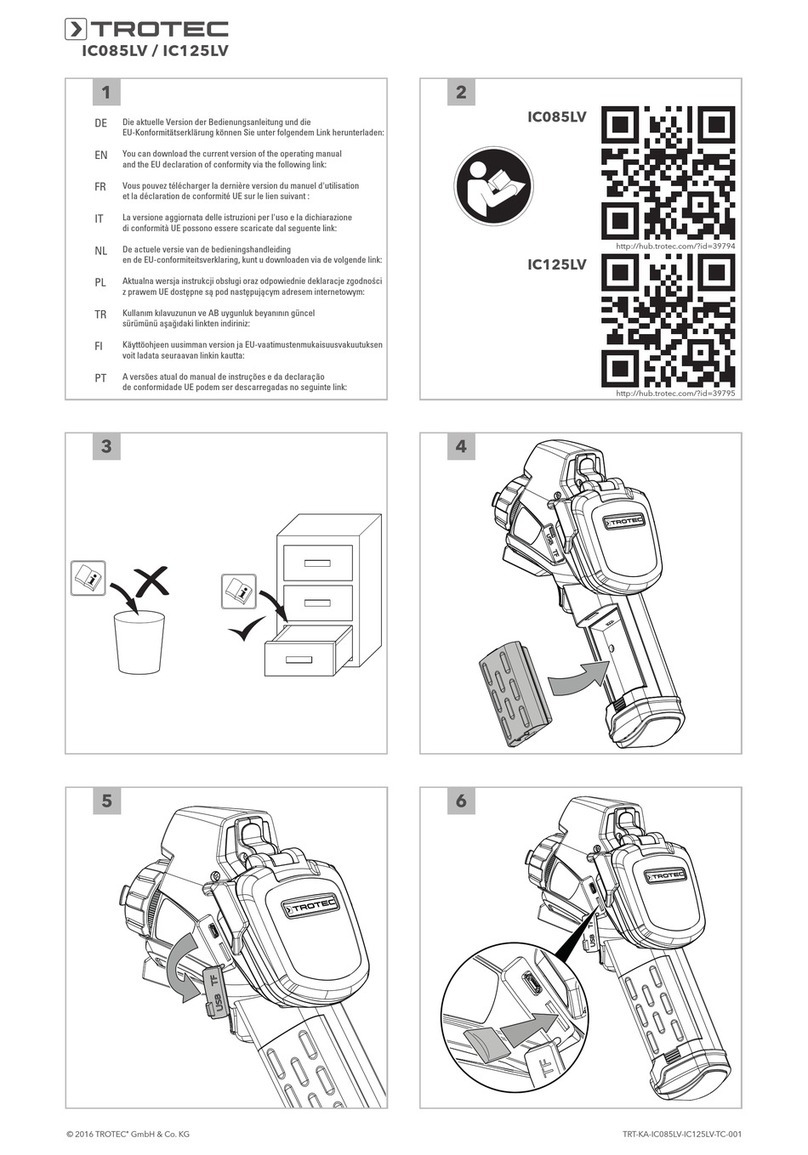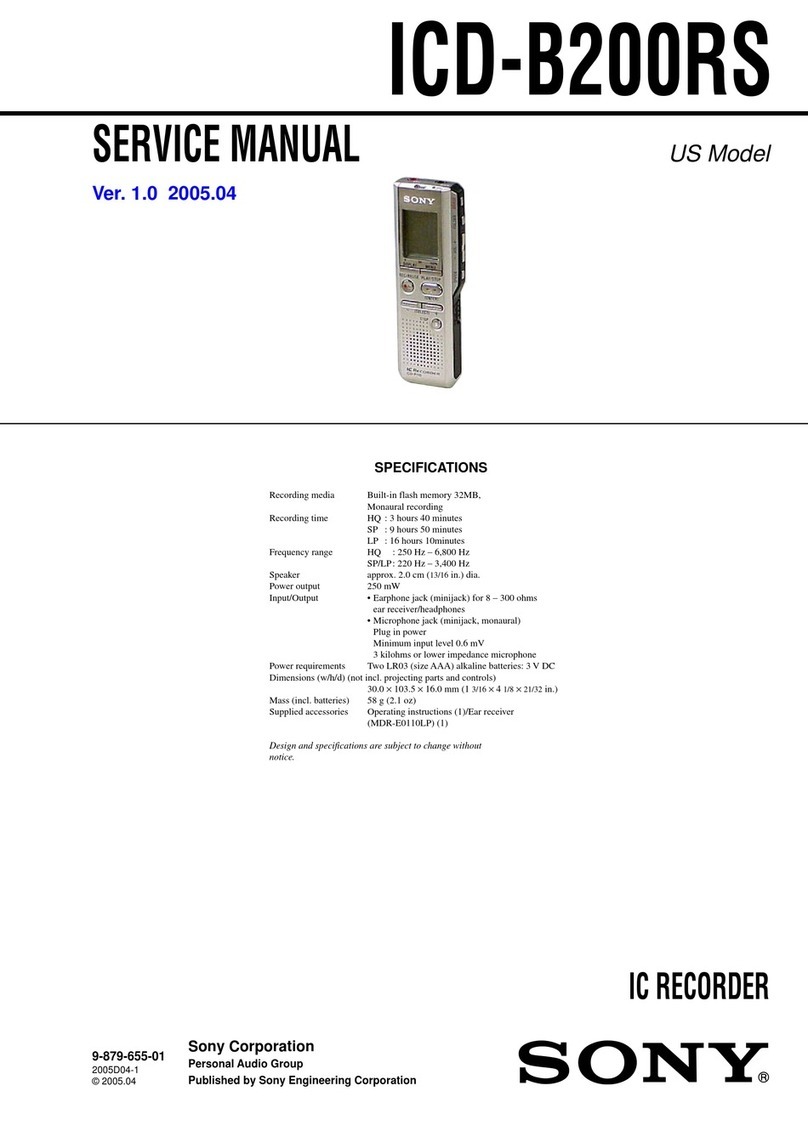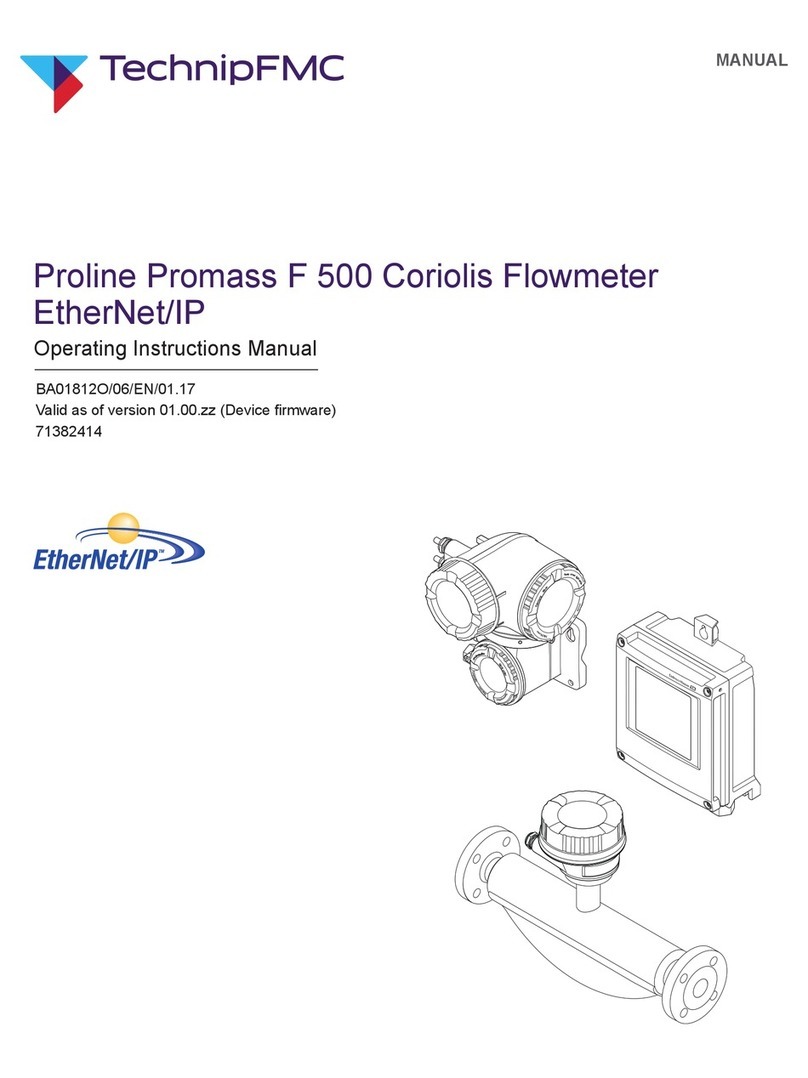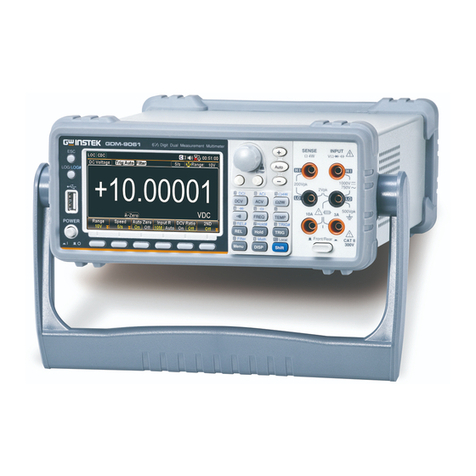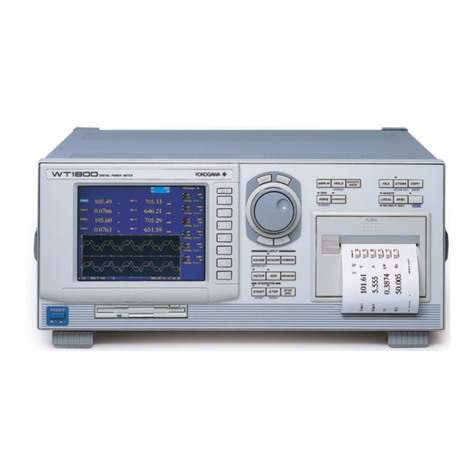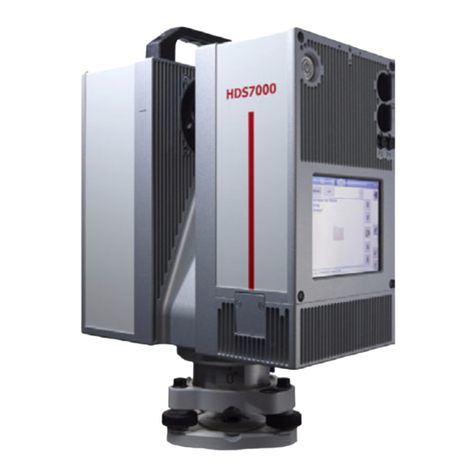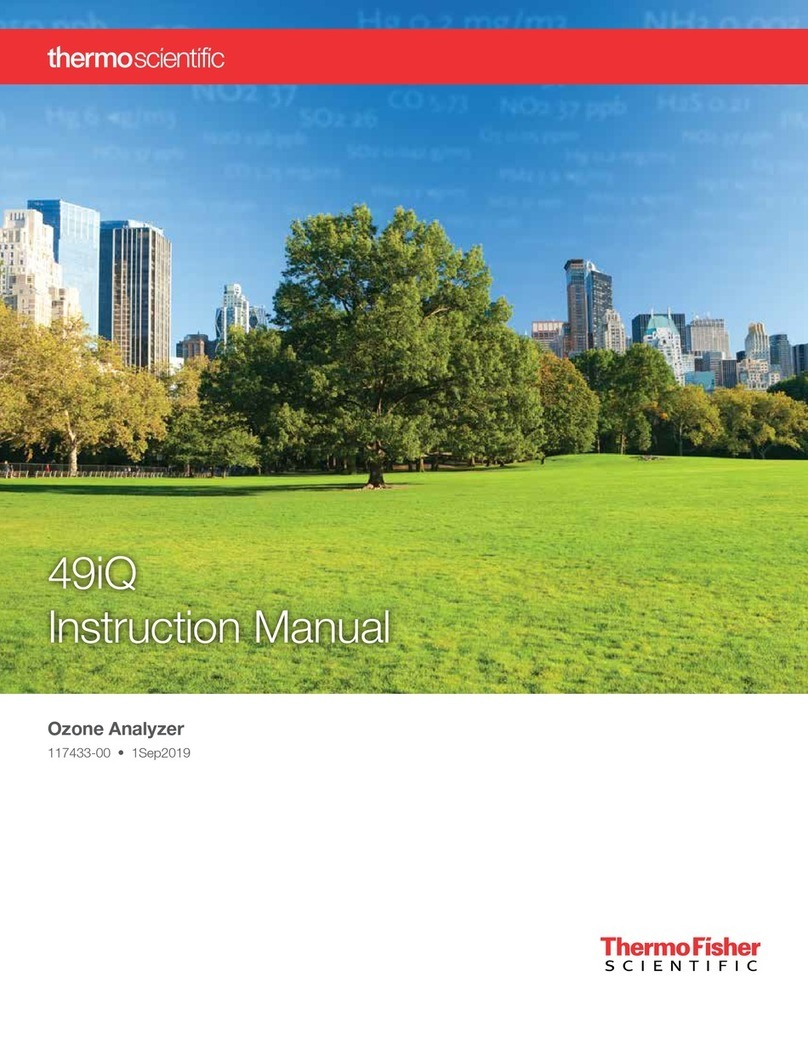Bird Electronic 4314B User manual

RF DIRECTIONAL
THRULINE®WATTMETER
Operations Manual
Model 4314B
©Copyright 2010 by Bird Electronic Corporation
Instruction Book Part Number 920-4314B Rev. E
Thruline is a registered trademark of
Bird Electronic Corporation


i
Safety Precautions
The following are general safety precautions that are not necessarily
related to any specific part or procedure, and do not necessarily appear
elsewhere in this publication. These precautions must be thoroughly
understood and apply to all phases of operation and maintenance.
WARNING
Keep Away From Live Circuits
Operating Personnel must at all times observe general safety
precautions. Do not replace components or make adjustments to the
inside of the test equipment with the high voltage supply turned on.
To avoid casualties, always remove power.
WARNING
Shock Hazard
Do not attempt to remove the RF transmission line while RF power
is present.
WARNING
Do Not Service Or Adjust Alone
Under no circumstances should any person reach into an enclosure
for the purpose of service or adjustment of equipment except in the
presence of someone who is capable of rendering aid.
WARNING
Safety Earth Ground
An uninterruptible earth safety ground must be supplied from the
main power source to test instruments. Grounding one conductor of
a two conductor power cable is not sufficient protection. Serious
injury or death can occur if this grounding is not properly supplied.
WARNING
Resuscitation
Personnel working with or near high voltages should be familiar
with modern methods of resuscitation.
WARNING
Remove Power
Observe general safety precautions. Do not open the instrument
with the power on.

ii
Safety Symbols
Note: Calls attention to supplemental information.
Warning Statements
The following safety warnings appear in the text where there is dan-
ger to operating and maintenance personnel, and are repeated here
for emphasis.
On pages 3and 11.
On page 21.
WARNING
Warning notes call attention to a procedure, which if not correctly
performed, could result in personal injury.
CAUTION
Caution notes call attention to a procedure, which if not correctly
performed, could result in damage to the instrument.
WARNING
Exposure to RF power radiation and the possibility of RF shock or
burns exists with some operating conditions. Always be sure to
turn off the transmitter when connecting or disconnecting a
wattmeter.
Be sure the transmission line is terminated into a load or antenna.
When a Plug-In Element is removed from the RF line socket, the
line section center conductor is exposed. Do not put fingers or other
objects into the Plug-In Element socket while RF power is applied.
WARNING
Always be sure transmitter power is off before disconnecting the
unit from the transmission line.

iii
Caution Statements
The following equipment cautions appear in the text and are repeated
here for emphasis.
On page 3.
On page 4.
On pages 11 and 23.
On page 11.
On page 16.
On page 28.
CAUTION
Do not drop the Thruline Wattmeter or its elements or subject them
to hard blows. The microammeter is shock mounted in the wattmeter
housing, but its delicate mechanism may be damaged by severe impact.
CAUTION
Severe damage to the Plug-In Element or wattmeter can result from
exposure to excessive RF power. Make sure the Plug-In Element
installed in the wattmeter has a sufficiently high wattage rating to
handle the line load when it is first applied to the RF line.
CAUTION
Use reasonable care in handling. Do not drop or subject the
wattmeter or elements to hard blows as accuracy may be impaired or
other damage may result.
CAUTION
Do not apply RF power to the wattmeter in excess of the full scale
range of the element.
CAUTION
When making low reflection readings using a more sensitive element,
take care to insert the element so that it senses reflected power only.
Do not rotate the element in the socket so that it is subjected to
forward power. This can result in damage to the Plug-In Element, the
microammeter, or both.
CAUTION
If other than Female N type connectors are used, limit power and
frequency to the capabilities of the RF coaxial cable or connectors
used. Damage to connectors or errors in reading could result.

iv
Safety Statements
USAGE
ANY USE OF THIS INSTRUMENT IN A MANNER NOT
SPECIFIED BY THE MANUFACTURER MAY IMPAIR THE
INSTRUMENT’S SAFETY PROTECTION.
USO
EL USO DE ESTE INSTRUMENTO DE MANERA NO
ESPECIFICADA POR EL FABRICANTE, PUEDE ANULAR LA
PROTECCIÓN DE SEGURIDAD DEL INSTRUMENTO.
BENUTZUNG
WIRD DAS GERÄT AUF ANDERE WEISE VERWENDET ALS VOM
HERSTELLER BESCHRIEBEN, KANN DIE GERÄTESICHERHEIT
BEEINTRÄCHTIGT WERDEN.
UTILISATION
TOUTE UTILISATION DE CET INSTRUMENT QUI N’EST PAS
EXPLICITEMENT PRÉVUE PAR LE FABRICANT PEUT
ENDOMMAGER LE DISPOSITIF DE PROTECTION DE
L’INSTRUMENT.
IMPIEGO
QUALORA QUESTO STRUMENTO VENISSE UTILIZZATO IN
MODO DIVERSO DA COME SPECIFICATO DAL PRODUTTORE
LA PROZIONE DI SICUREZZA POTREBBE VENIRNE
COMPROMESSA.

v
SERVICE
SERVICING INSTRUCTIONS ARE FOR USE BY SERVICE -
TRAINED PERSONNEL ONLY. TO AVOID DANGEROUS
ELECTRIC SHOCK, DO NOT PERFORM ANY SERVICING
UNLESS QUALIFIED TO DO SO.
SERVICIO
LAS INSTRUCCIONES DE SERVICIO SON PARA USO
EXCLUSIVO DEL PERSONAL DE SERVICIO CAPACITADO. PARA
EVITAR EL PELIGRO DE DESCARGAS ELÉCTRICAS, NO
REALICE NINGÚN SERVICIO A MENOS QUE ESTÉ
CAPACITADO PARA HACERIO.
WARTUNG
ANWEISUNGEN FÜR DIE WARTUNG DES GERÄTES GELTEN
NUR FÜR GESCHULTES FACHPERSONAL.
ZUR VERMEIDUNG GEFÄHRLICHE, ELEKTRISCHE SCHOCKS,
SIND WARTUNGSARBEITEN AUSSCHLIEßLICH VON
QUALIFIZIERTEM SERVICEPERSONAL DURCHZUFÜHREN.
ENTRENTIEN
L’EMPLOI DES INSTRUCTIONS D’ENTRETIEN DOIT ÊTRE
RÉSERVÉ AU PERSONNEL FORMÉ AUX OPÉRATIONS
D’ENTRETIEN. POUR PRÉVENIR UN CHOC ÉLECTRIQUE
DANGEREUX, NE PAS EFFECTUER D’ENTRETIEN SI L’ON N’A
PAS ÉTÉ QUALIFIÉ POUR CE FAIRE.
ASSISTENZA TECNICA
LE ISTRUZIONI RELATIVE ALL’ASSISTENZA SONO PREVISTE
ESCLUSIVAMENTE PER IL PERSONALE OPPORTUNAMENTE
ADDESTRATO. PER EVITARE PERICOLOSE SCOSSE
ELETTRICHE NON EFFETTUARRE ALCUNA RIPARAZIONE A
MENO CHE QUALIFICATI A FARLA.

vi
RF VOLTAGE MAY BE PRESENT IN RF ELEMENT SOCKET - KEEP
ELEMENT IN SOCKET DURING OPERATION.
DE LA TENSION H.F. PEAT ÊTRE PRÉSENTE DANS LA PRISE DE
L'ÉLÉMENT H.F. - CONSERVER L'ÉLÉMENT DANS LA PRISE LORS
DE L'EMPLOI.
HF-SPANNUNG KANN IN DER HF-ELEMENT-BUCHSE ANSTEHEN -
ELEMENT WÄHREND DES BETRIEBS EINGESTÖPSELT LASSEN.
PUEDE HABER VOLTAJE RF EN EL ENCHUFE DEL ELEMENTO RF -
MANTENGA EL ELEMENTO EN EL ENCHUFE DURANTE LA
OPERACION.
IL PORTAELEMENTO RF PUÒ PRESENTARE VOLTAGGIO RF -
TENERE L'ELEMENTO NELLA PRESA DURANTE IL
FUNZIONAMENTO.

vii
About This Manual
This manual covers the operating and maintenance instructions for
the following models:
Changes to this Manual
We have made every effort to ensure this manual is accurate. If you
discover any errors, or if you have suggestions for improving this man-
ual, please send your comments to our Solon, Ohio factory. This man-
ual may be periodically updated. When inquiring about updates to
this manual refer to the part number and revision on the title page.
Literature Contents
Chapter Layout
Introduction - Describes the features of the Thruline wattmeter, lists
equipment supplied and optional equipment.
Installation - Describes how set up the Thruline wattmeter.
Operating Instructions - Describes procedures required for operating
the wattmeter.
Maintenance -Lists routine maintenance tasks as well as trouble-
shooting for common problems. Specifications and parts information
are also included.
4314B

viii

ix
Table of Contents
Safety Precautions . . . . . . . . . . . . . . . . . . . . . . . . . . . . . . . . . . . . . . . . i
Safety Symbols . . . . . . . . . . . . . . . . . . . . . . . . . . . . . . . . . . . . . . . . .ii
Warning Statements . . . . . . . . . . . . . . . . . . . . . . . . . . . . . . . . . . . . .ii
Caution Statements . . . . . . . . . . . . . . . . . . . . . . . . . . . . . . . . . . . . iii
Safety Statements . . . . . . . . . . . . . . . . . . . . . . . . . . . . . . . . . . . . . . iv
About This Manual . . . . . . . . . . . . . . . . . . . . . . . . . . . . . . . . . . . . . . .vii
Changes to this Manual . . . . . . . . . . . . . . . . . . . . . . . . . . . . . . . . .vii
Literature Contents . . . . . . . . . . . . . . . . . . . . . . . . . . . . . . . . . . . .vii
Chapter Layout . . . . . . . . . . . . . . . . . . . . . . . . . . . . . . . . . . . . .vii
Chapter 1 Introduction . . . . . . . . . . . . . . . . . . . . . . . . . . . . . . . . . . 1
Purpose and Function . . . . . . . . . . . . . . . . . . . . . . . . . . . . . . . . . . . . 1
Description . . . . . . . . . . . . . . . . . . . . . . . . . . . . . . . . . . . . . . . . . . . . 1
Performance Characteristics and Capabilities . . . . . . . . . . . . . . . . 1
Power Requirements . . . . . . . . . . . . . . . . . . . . . . . . . . . . . . . . . . . . . 2
Additional Equipment . . . . . . . . . . . . . . . . . . . . . . . . . . . . . . . . . . . 2
Chapter 2 Installation . . . . . . . . . . . . . . . . . . . . . . . . . . . . . . . . . . . 3
Portability . . . . . . . . . . . . . . . . . . . . . . . . . . . . . . . . . . . . . . . . . . . . . 3
Connections . . . . . . . . . . . . . . . . . . . . . . . . . . . . . . . . . . . . . . . . . . . . 3
Chapter 3 Theory of Operation . . . . . . . . . . . . . . . . . . . . . . . . . . . 5
Traveling Wave Viewpoint . . . . . . . . . . . . . . . . . . . . . . . . . . . . . . . .5
Coupling Circuit . . . . . . . . . . . . . . . . . . . . . . . . . . . . . . . . . . . . . . . . 5
Peak Power Operation . . . . . . . . . . . . . . . . . . . . . . . . . . . . . . . . . . . 6
Component Description . . . . . . . . . . . . . . . . . . . . . . . . . . . . . . . . 9
Chapter 4 Operating Instructions . . . . . . . . . . . . . . . . . . . . . . . 11
Zero Adjust Meter . . . . . . . . . . . . . . . . . . . . . . . . . . . . . . . . . . . . . . 11
Plug-In Element Selection and Insertion . . . . . . . . . . . . . . . . . . . 12
Measurements . . . . . . . . . . . . . . . . . . . . . . . . . . . . . . . . . . . . . . . . . 12
CW Power Measurements . . . . . . . . . . . . . . . . . . . . . . . . . . . . . 12
Peak Power Measurements . . . . . . . . . . . . . . . . . . . . . . . . . . . . 12
Load power . . . . . . . . . . . . . . . . . . . . . . . . . . . . . . . . . . . . . . . . . . .13
Determining VSWR . . . . . . . . . . . . . . . . . . . . . . . . . . . . . . . . . . . . 13
Making Low Reflection Readings . . . . . . . . . . . . . . . . . . . . . . . . . .16

x
Testing Lines, Connectors,
Filters & Related Components . . . . . . . . . . . . . . . . . . . . . . . . . . . . 16
Attenuation By Open Or Short Circuit . . . . . . . . . . . . . . . . . . . . . 17
Measuring Percentage Of Positive Modulation . . . . . . . . . . . . 17
Performance Notes . . . . . . . . . . . . . . . . . . . . . . . . . . . . . . . . . . . . . 20
Shutdown . . . . . . . . . . . . . . . . . . . . . . . . . . . . . . . . . . . . . . . . . . . . 21
Chapter 5 Maintenance . . . . . . . . . . . . . . . . . . . . . . . . . . . . . . . . . 23
Cleaning . . . . . . . . . . . . . . . . . . . . . . . . . . . . . . . . . . . . . . . . . . . . . 23
Preventative Maintenance . . . . . . . . . . . . . . . . . . . . . . . . . . . . . . .23
Line Section Care . . . . . . . . . . . . . . . . . . . . . . . . . . . . . . . . . . . 24
Inspection . . . . . . . . . . . . . . . . . . . . . . . . . . . . . . . . . . . . . . . . . . 24
Troubleshooting . . . . . . . . . . . . . . . . . . . . . . . . . . . . . . . . . . . . . . . 24
Battery Procedures . . . . . . . . . . . . . . . . . . . . . . . . . . . . . . . . . . . . . 26
Testing the Batteries . . . . . . . . . . . . . . . . . . . . . . . . . . . . . . . . . 26
Replacing the Batteries . . . . . . . . . . . . . . . . . . . . . . . . . . . . . . . 26
Replacing the Meter . . . . . . . . . . . . . . . . . . . . . . . . . . . . . . . . . . . . 27
Replacing the Instrumentation Module . . . . . . . . . . . . . . . . . . . . 28
Replacing the Quick-Change Connectors . . . . . . . . . . . . . . . . . . . 29
Calibrating the Wattmeter . . . . . . . . . . . . . . . . . . . . . . . . . . . . . . .30
Customer Service . . . . . . . . . . . . . . . . . . . . . . . . . . . . . . . . . . . . . . 31
Specifications . . . . . . . . . . . . . . . . . . . . . . . . . . . . . . . . . . . . . . . . . 32
Replacement Parts . . . . . . . . . . . . . . . . . . . . . . . . . . . . . . . . . . . . . 33
*Available QC Type Connectors . . . . . . . . . . . . . . . . . . . . . . . . 33
Limited Warranty . . . . . . . . . . . . . . . . . . . . . . . . . . . . . . . . . . . . . . 35

1
Chapter 1 Introduction
Purpose and Function
The Model 4314B Thruline Wattmeter is an insertion- type RF wattme-
ter designed to measure power flow and load match in 50 ohm coaxial
transmission lines. It is intended for use on CW, AM, FM, SSB, TV, and
pulse signals only.
Description
The Model 4314B Thruline Wattmeter is a portable unit contained in
a die cast aluminum housing. The unit is equipped with a plastic strap
for carrying, four rubber shock feet on the base, and four rubber bum-
pers on the back which allow the unit to stand vertical or lie flat in a
horizontal position when used. For additional protection, the
microammeter is specially shock mounted. A slotted screw is provided
on the lower front face of the meter for zeroing the pointer.
The RF line section face below the meter protrudes slightly from the
wattmeter housing with the Plug-In Element socket in the center. The
circuit module is mounted on the line section inside the housing. It has
an attached phosphor bronze spring contact finger, which protrudes
through a lateral hole and into the Plug-In Element socket on the RF
line section. The finger has a button on its end which makes connec-
tion with the contacts of the Plug-in Element. The silver-plated brass
RF line section is precision made to provide the best possible imped-
ance match to the coaxial RF transmission line in which the wattme-
ter is inserted. At each end of the line section are Bird Quick-Change
type RF connectors, which may be quickly interchanged with any
other Bird “QC” connectors.
Performance Characteristics and Capabilities
To make measurements, insert a Plug-In Element into the line section
socket and rotate it to either stop. Point the element arrow in the
source to load direction of power flow and the meter will display a
reading of forward power. Rotate the element so that the arrow is
pointed in the opposite direction to obtain a reflected power reading.
With known values of forward and reflected power the load match can
now be determined by calculating the VSWR or by using the graphs
supplied in this manual (Figure 5 on page 14 and Figure 6 on
page 15).
Setting the front panel toggle switch to peak mode gives the wattme-
ter the capability of indicating peak pulse or envelope power.

Bird Technologies
2
Power Requirements
The Model 4314B can operate from two different power sources. The
wattmeter comes supplied with two 9 V alkaline batteries which typi-
cally provide 20 hours of operation. AC adapters are also available for
use with either a 115 or 230 VAC line.
Additional Equipment
The only additional equipment required by the Model 4314B is a Plug-
In Element (see table below). Most of them are designed to read both
average and peak power. Some are designed exclusively for peak read-
ing application.

3
Chapter 2 Installation
Portability
The Model 4314B is a portable instrument; the housing is not designed
for fixed mounting. A strap is provided for carrying purposes.
When transporting the Thruline Wattmeter, it is best to insert the
original dust plug, or a Plug-In Element with the arrow pointed down,
in the measuring socket, and secure it with the catch. This will shunt
the meter circuit and serve to protect it by dampening the pointer
action during handling or shipping. Also, set the wattmeter controls to
ON and CW modes. In this position, any unnecessary battery drain
will be avoided. Handle the Plug-In Elements with care at all times as
their calibration could be disturbed if they are dropped.
Connections
The Model 4314B Wattmeter is normally supplied with two Female N
type connectors which are of the Bird Quick-Change “QC” design. Other
“QC” connectors are available as listed in the Replacement Parts. See
“Replacement Parts” on page 33.
1.
Insert the Model 4314B Thruline Wattmeter in coaxial transmission
lines of 50 ohms nominal impedance. The signal source and load con-
nections can be made to either side of the wattmeter with no differ-
ence in effect. Use a coaxial transmission line fitted with suitable
matching RF connectors. If cables of other than 50 ohms impedance
are used, a mismatch will occur which could cause serious inaccura-
cies in the readings.
CAUTION
Do not drop the Thruline Wattmeter or its elements or subject them
to hard blows. The microammeter is shock mounted in the wattmeter
housing, but its delicate mechanism may be damaged by severe impact.
WARNING
Exposure to RF power radiation and the possibility of RF shock or
burns exists with some operating conditions. Always be sure to
turn off the transmitter when connecting or disconnecting a
wattmeter.
Be sure the transmission line is terminated into a load or antenna.
When a Plug-In Element is removed from the RF line socket, the
line section center conductor is exposed. Do not put fingers or other
objects into the Plug-In Element socket while RF power is applied.

Bird Technologies
4
Figure 1 Model 4314B Outline Drawing
CAUTION
Severe damage to the Plug-In Element or wattmeter can result from
exposure to excessive RF power. Make sure the Plug-In Element
installed in the wattmeter has a sufficiently high wattage rating to
handle the line load when it is first applied to the RF line.
1-5/16"
(33.3mm)
3-3/8"
3-5/8”
(
92.1mm
)
(85.7mm)
6-7/8"
(174.6mm)
4"
(101.6mm)
1-3/4"
(44.5mm)
Female "N" Q.C.
Connectors (2)
(Normally
Supplied)
ON
BATTERY
CW
PEAK
15
80
F.S.= 30 UA.PN 2080 - 002
W
ELECTRONIC
20
0
BIRD
10
5
30
40
TTA
THRULINE
60
S
CORP.
R
20
10
40
50
100
20

5
Chapter 3 Theory of Operation
Traveling Wave Viewpoint
The operation of this wattmeter is based on the travelling wave con-
cept of RF transmission. As RF power is applied to a transmission
line, there is a forward wave travelling from the transmitter to the
load, and a reflected wave travelling from the load to the transmitter.
The closer the load is matched to the transmission line, the smaller
the reflected wave will be. To determine the amount of power dissi-
pated in a load resistor, it is necessary to determine the wattage of the
forward wave and the wattage of the reflected wave. The difference
between the two indicates load power.
VSWR (Voltage Standing Wave Ratio) has become a widely used tool
in the travelling wave concept. The standing waves which are pro-
duced by transmission line mismatch cannot be read directly. How-
ever, the VSWR can be easily determined by the use of the VSWR
Conversion Nomographs (fFigure 5 on page 14 and Figure 6 on
page 15), without requiring the use of unwieldy and expensive slotted
line equipment. Many users find that the ratio of is more useful than
VSWR.
Coupling Circuit
When the wattmeter is connected into the system, the RF power is
directed through the unit’s line section. The air line is a short, uniform
section which does not impair the impedance of the RF coaxial line
into which it is inserted. When the Plug-In Element is installed in the
socket of the line section, the RF waves travelling through the line
produce energy in the coupling circuit of the Plug-In Element by both
inductance and capacitance (Figure 2 on page 7). The inductive cur-
rents will flow according to the direction of the travelling waves pro-
ducing them. Therefore, assuming that the Plug-In Element remains
stationary, the coupling currents produced from the waves of one
direction add in phase, while those produced from the waves of the
opposite direction subtract in phase. The additive or “arrow” direction
is assigned to the forward wave. The element is designed so that the
wave components travelling in the opposite direction of the arrow will
nearly cancel each other out, making the element highly insensitive to

Bird Technologies
6
the reverse wave direction. Because of the highly directional charac-
teristics of the element, the resultant direct current sensed by the
microammeter indicates the power level of only the RF waves travel-
ling in the arrow direction.
The Plug-In Element is designed so that it can be rotated 180 degrees
in its socket in the line section. When it is rotated, the meter indicates
the power in a direction opposite that of the initial reading. If the for-
ward direction power is read first, the reflected direction power will be
read after the Plug-In Element is rotated. The energy resulting from
the inductively coupled component of the forward wave will bring
about cancellation as described above.
Peak Power Operation
The Model 4314B is designed to measure peak power in addition to
average power. When the toggle switch is placed in peak mode, bat-
tery power energizes the amplifier system. If the AC adapter is being
used, it energizes relay (K1) and disengages the batteries (Figure 3 on
page 8).
The battery test circuit is energized when the push button of switch
S2 is depressed. If the voltages of the two 9 V batteries are within the
limits necessary to properly operate
the amplifier circuit, the pointer of the meter deflects beyond the bat-
tery test mark on the meter scale. If the pointer fails to reach the
mark, the batteries need replaced. Replacement of both batteries
simultaneously will assure that sufficient battery power will be avail-
able for extended periods of time (see “Maintenance” on page 23).
The amplifier circuit is designed to provide current to the meter which
indicates at a steady state the peak of the power applied to resistor
R5. Resistor R5 exactly matches the resistance of meter M so that the
existing circuit in the Plug-In Element is loaded exactly the same as
during the average reading mode (Figure 2 on page 7).
When switch S1 is pressed, the DC input which is normally applied to
the meter is interrupted and is applied instead to resistor R5 and dif-
ferential amplifier Q1. This results in a current gain ratio of approxi-
mately 100:1. This output is applied to a resistance bridge consisting
of resistors R6, R7, R8, R9, and R10. Variable resistor R8 of this
bridge permits zero calibration of the amplifier circuit. Bridge output
is applied to differential amplifier U1 which provides a voltage gain of
about 1000:1. This ratio represents the surge of voltage from the
amplifier which charges capacitor C3 and indicates the minimum
pulse duration. Capacitor C3 applies a potential to differential ampli-
fiers Q2 and Q3 as long as the capacitor remains charged. These
amplifiers provide a massive current gain ratio, but unity or slightly

Theory of Operation
7
less voltage gain. This is applied to meter M to indicate the peak
power in the line. A portion of the DC output of amplifiers Q2 and Q3
is fed back to resistor R4 and to amplifier Q1. Resistor R4 is matched
to resistor R5 to provide unity gain to the amplifier. This feedback cir-
cuit maintains the output from Q1 and U1 to keep capacitor C3
charged to that value which yields unity closed loop gain.
The capacitor continues to energize Q2 and Q3, to maintain the read-
ing of the meter even though the peak of the pulse is no longer applied
to the amplifier assembly input. Only the peak power is indicated even
though there is a wide fluctuation of input power.
Because of capacitor leakage, diode back resistance, and transistor
input current, there will be a decay in the circuit that limits the time
the amplifier system will retain its output level. As the circuit decays,
the meter will return to zero if no additional pulses are received at
resistor R5.
Figure 2 Schematic Diagram - Element
RF Coaxial Line
XMTR
or
LOAD
LOAD
or
XMTR
Directional Coupling
Diode
Detector Element
Meter
DC Contact
Circuit Board

Bird Technologies
8
Figure 3 Model 4314B Schematic Diagram
Table of contents
Other Bird Electronic Measuring Instrument manuals
Popular Measuring Instrument manuals by other brands
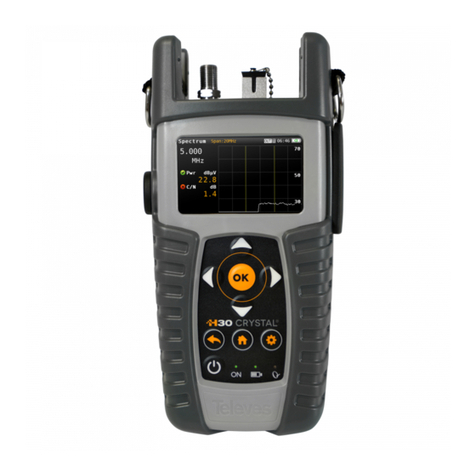
Televes
Televes H30 Evolution instruction manual
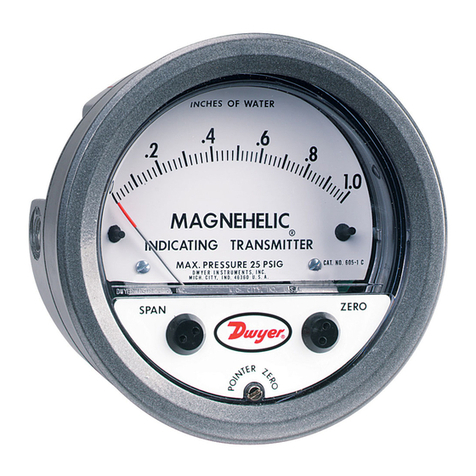
Dwyer Instruments
Dwyer Instruments 605-00N Specifications-installation and operating instructions

Allestec
Allestec EDISON ONGUARD 1604 System operation manual
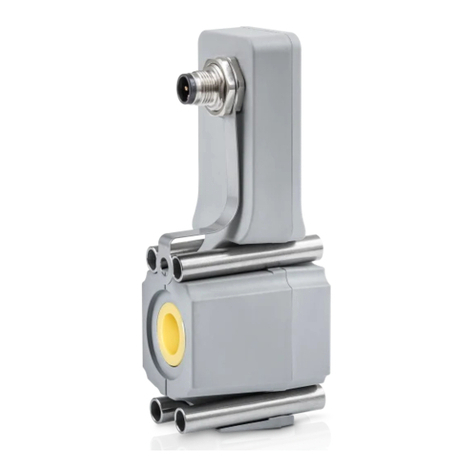
KROHNE
KROHNE BATCHFLUX 3100 quick start

Hanna Instruments
Hanna Instruments HI 250 instruction manual

Chauvin Arnoux
Chauvin Arnoux Chauvin Arnoux user manual

